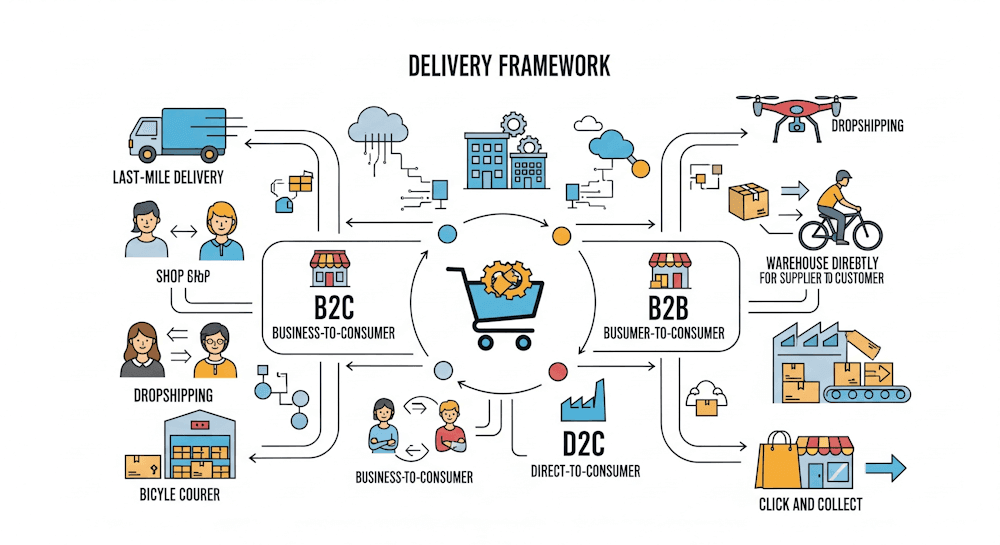Four Traditional Types of E-commerce Business Models
If you’re launching an e-commerce business, you’ll almost certainly fall into one of these four categories. Each has its own set of advantages and disadvantages, and many businesses operate in multiple categories simultaneously.
Knowing which bucket your big idea belongs in can help you better understand your possibilities and threats in a more creative way.
1. B2C – Business to Consumer
Businesses that sell directly to consumers are known as B2C. This is the most common e-commerce business model and covers a wide range of options. Anything you buy as a consumer in an online store—like clothing, household items, or entertainment—is a B2C transaction.
A B2C purchase usually has a shorter decision-making process than a B2B purchase, especially for lower-value items. For example, deciding on a new pair of tennis shoes is much easier than choosing a new email service provider or catering company for your organization.
Key characteristics of B2C businesses:
- Typically spend less on marketing per sale
- Lower average order value
- Fewer recurring purchases
- Can include both products and services
B2C innovators leverage technology such as mobile apps, native advertising, and retargeting to connect directly with customers. Apps like Lawn Guru help consumers quickly find local lawn mowing, garden, or snow removal services. Similarly, Housecall Pro allows home service businesses to manage personnel routes, SMS customers, and accept credit card payments on the go—benefiting both the consumer and the business.
2. B2B – Business to Business
In a B2B model, a company sells its products or services to another business. The buyer may or may not be the end-user, as most of the time the purchased items are resold to consumers.
Key points about B2B transactions:
- Longer sales cycle
- Higher order values
- More repeat orders
Modern B2B innovators are moving away from traditional catalogues and order sheets in favor of e-commerce storefronts and niche market targeting. With Millennials accounting for over half of B2B buyers in 2020 (nearly double from 2012), online B2B selling is becoming increasingly important as younger generations drive digital business transactions.
3. C2B – Consumer to Business
The C2B model allows individuals to sell goods or services to businesses. Websites in this category may let clients post work they need done, allowing businesses to compete for the job.
Affiliate marketing services also fall under the C2B category. For example, Elance (now Upwork) helped businesses hire freelancers early on.
Advantages of C2B:
- Consumers can set their own prices
- Businesses compete to win the customer’s business
This model is increasingly used to connect businesses with social media influencers, helping promote products and services creatively.
4. C2C – Consumer to Consumer
A C2C business connects consumers with one another to exchange goods or services. Often called an online marketplace, these platforms make money through transaction or listing fees.
Early pioneers of C2C include Craigslist and eBay.
Pros and challenges of C2C businesses:
- Benefits from self-driven growth of motivated buyers and sellers
- Faces challenges in quality control and technology maintenance






